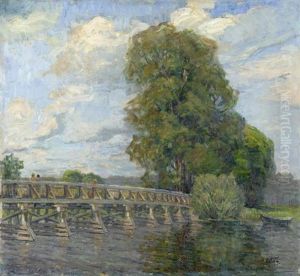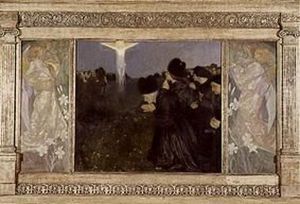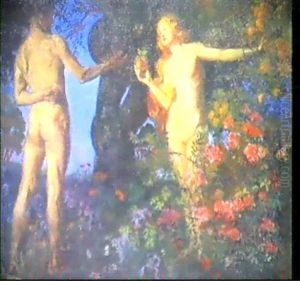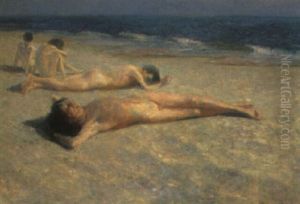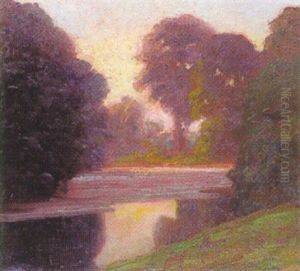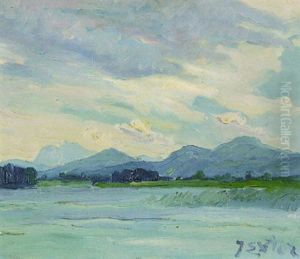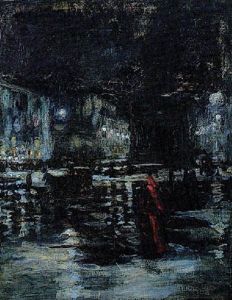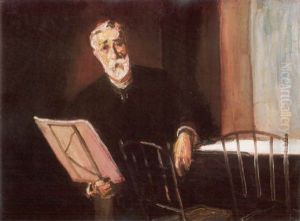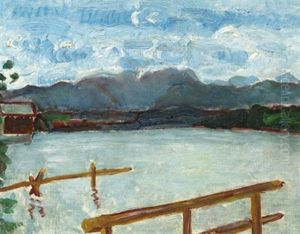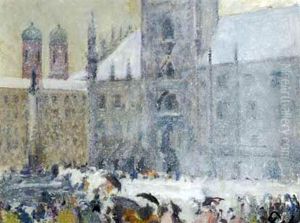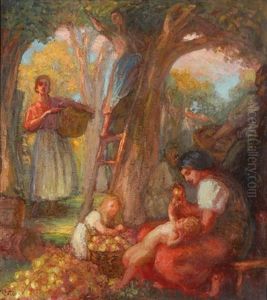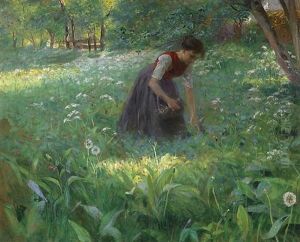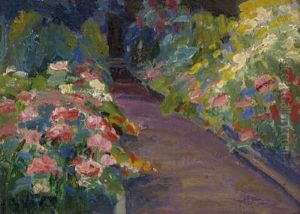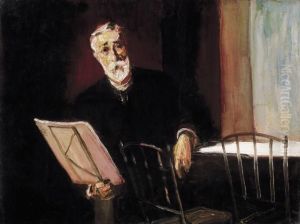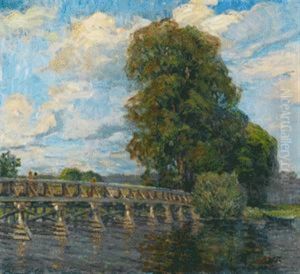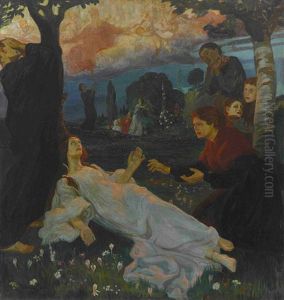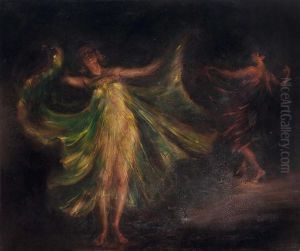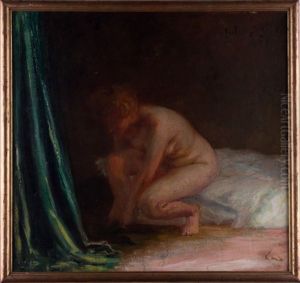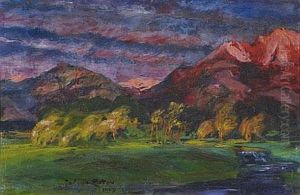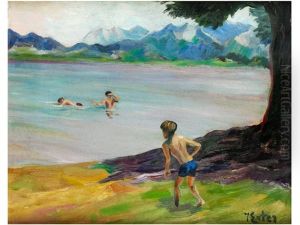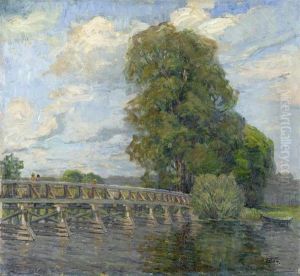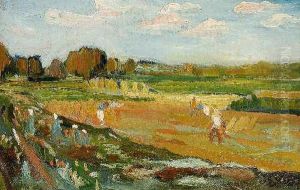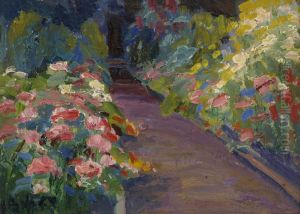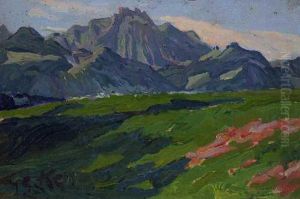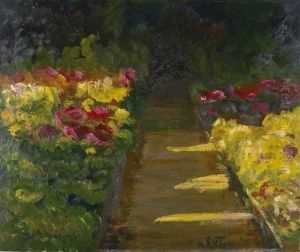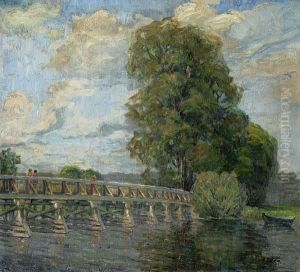Julius Exter Paintings
Julius Exter was a significant figure in the German art scene at the turn of the 20th century, known for his vibrant use of color and dynamic compositions that bridged the gap between late Impressionism and the burgeoning Expressionist movement. Born on September 20, 1863, in Ludwigshafen am Rhein, Germany, Exter showed an early interest in art, which led him to pursue his passion at the Academy of Fine Arts, Munich. Over the years, his style evolved significantly, reflecting the broader changes occurring within the art world during his lifetime.
Exter's early work was anchored in the academic traditions of the Munich school, but he quickly became enamored with the more fluid and luminous qualities of Impressionism. His travels, particularly to France, exposed him to the works of Impressionist masters, which deeply influenced his approach to light and color. By the early 20th century, his work began to exhibit a greater degree of abstraction, with bolder colors and more dynamic compositions, signaling his move towards Expressionism.
Despite his association with these movements, Exter was also deeply individualistic in his approach, often blending elements from different styles to create something uniquely his own. He was particularly noted for his landscapes, which captured the vibrancy and energy of the natural world through a kaleidoscope of color. Exter was also a renowned teacher, establishing a summer school on the Ammersee in Bavaria, where he influenced a generation of artists with his innovative techniques and philosophical approach to art.
Throughout his career, Exter remained somewhat on the periphery of the major art movements of his time, never fully aligning himself with a single school or group. This independence allowed him to explore a wide range of subjects and styles, from portraiture and landscape to decorative arts. He was also known for his theatrical designs, contributing to various productions with his distinctive sets and costumes.
Julius Exter passed away on March 16, 1939, in Übersee am Chiemsee, Germany. His legacy is preserved in the form of his vibrant artworks, which continue to be celebrated for their innovative use of color and form. His home and studio in Bavaria have been turned into a museum dedicated to his life and work, ensuring that his contributions to German art are remembered and appreciated by future generations.
